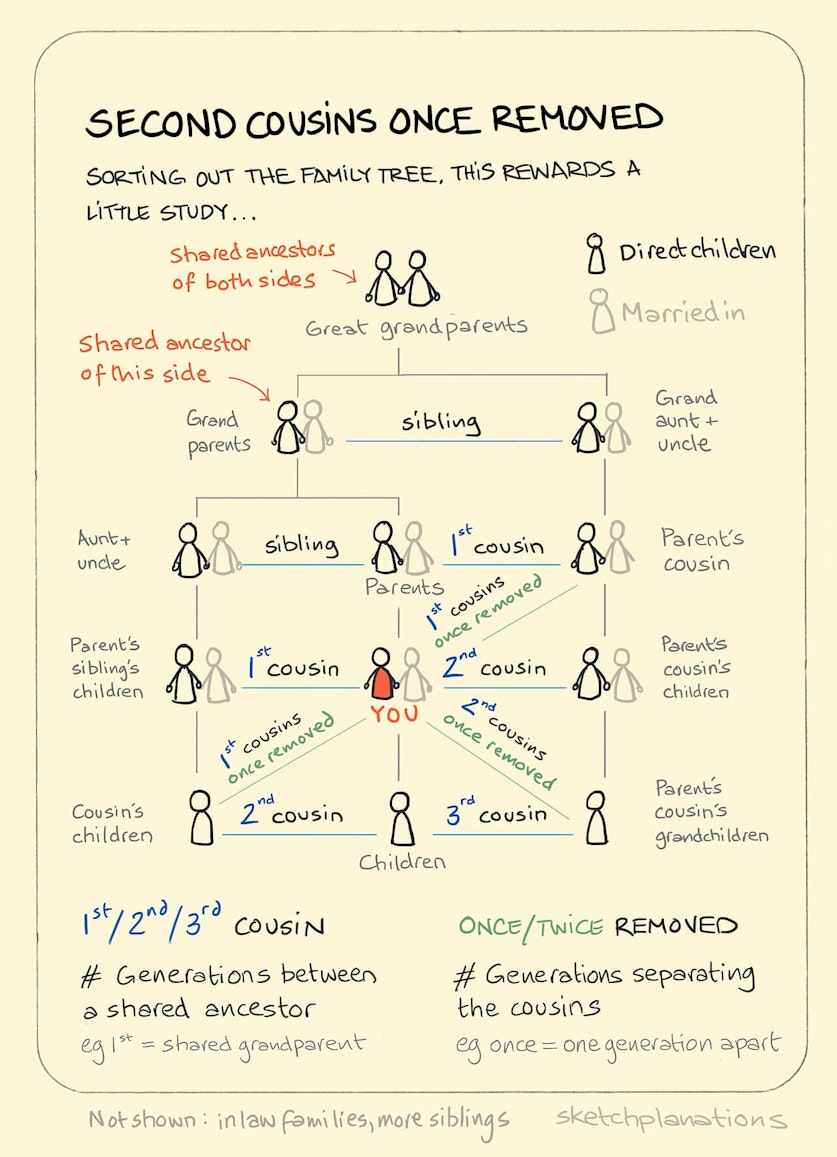
Understanding Second Cousins Once Removed: A Simple Family Tree Guide
Even when you’ve figured out the basics of family relations, families, in just a few generations, can get surprisingly complex. I won’t pretend this sketch doesn’t require a little study.
What Are First, Second, and Third Cousins?
What is a first, second or third cousin? And what does once or twice removed have to do with anything? One way to think about it is that the first, second or third cousins have to do with the number of generations you are away from a shared ancestor.
So, who you would probably normally call your cousins — your parents brothers or sisters, children — have one generation, your parents generation, before reaching grandparents that are shared by both.
If you have children, and your first cousins have children, they will be second cousins to each other as it’s now two generations to a shared ancestor — their great-grandparents in this case.
In short:
- First cousins share grandparents
- Second cousins share great-grandparents
- Third cousins share great-great-grandparents
What Does “Once Removed” Mean?
While first, second, or third cousins of each other are of the same generation, when you are once removed, it means you are cousins one generation apart. "Removed" refers to a generational difference.
So, your first cousin’s child is your first cousin once removed, and your parent’s cousin is also your first cousin once removed, just in the opposite direction.
- Once removed = one generation apart
- Twice removed = two generations apart
If you look at the sketch, you’ll actually see that you are second cousins once removed with your parent’s cousin’s grandchildren. Simple ¯_(ツ)_/¯
Even More Complex Than it Looks
Showing these relationships in the sketch gets pretty complicated. And even then, it's much simplified. I haven't included having more than one sibling, any of the in-law families, divorces, remarriages, half-brothers, stepmothers, and the like. Crikey.
Honestly, visualising a full family tree is difficult.
Videos about Family Trees
Two fun videos about family trees people shared with me:

